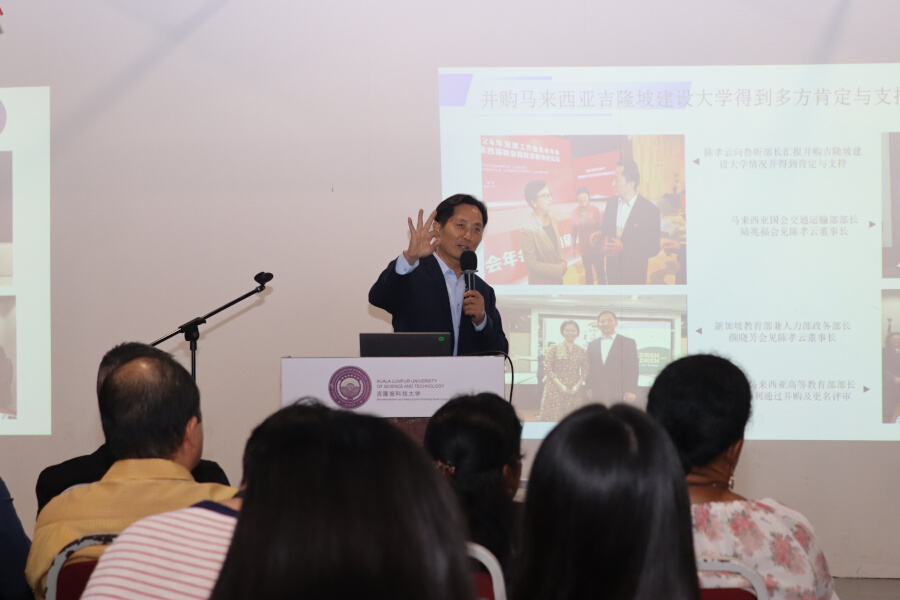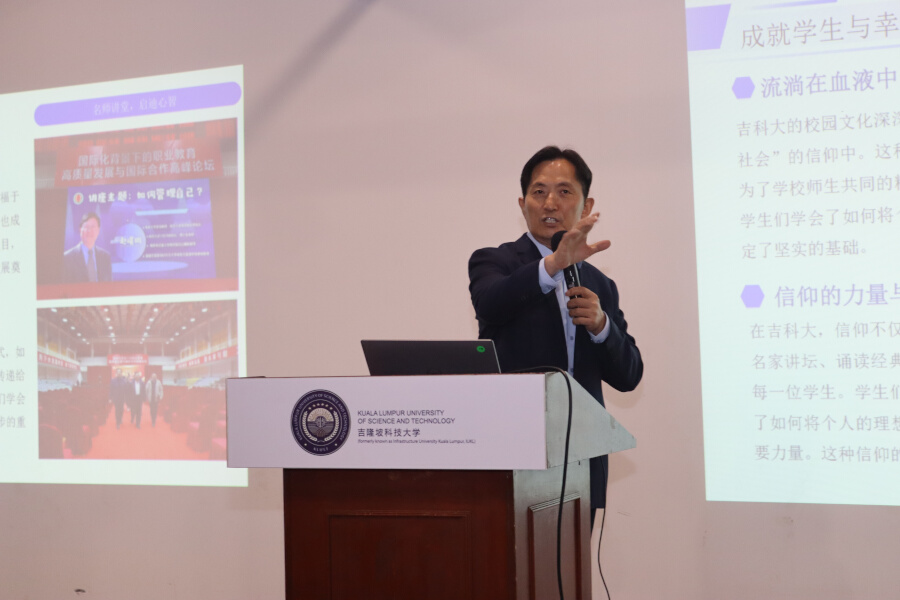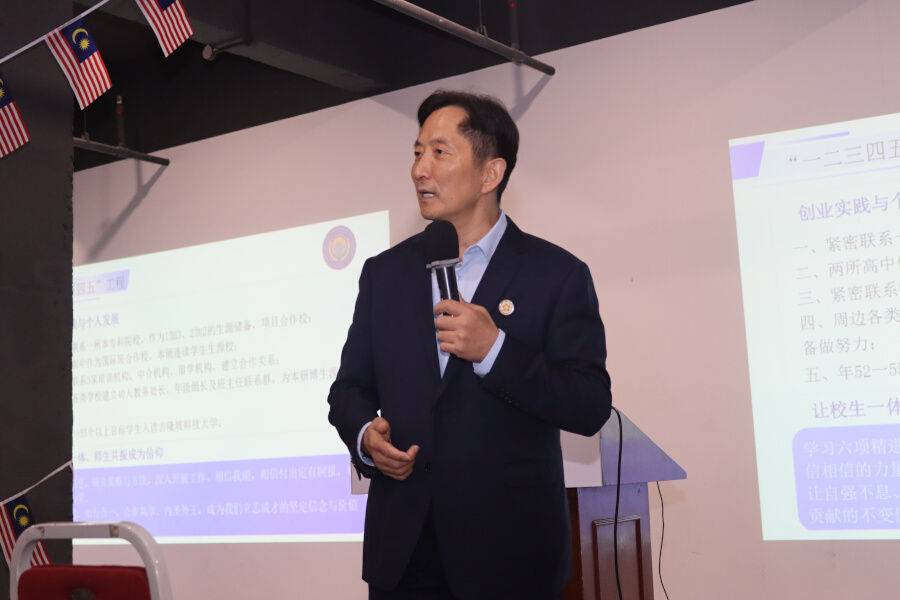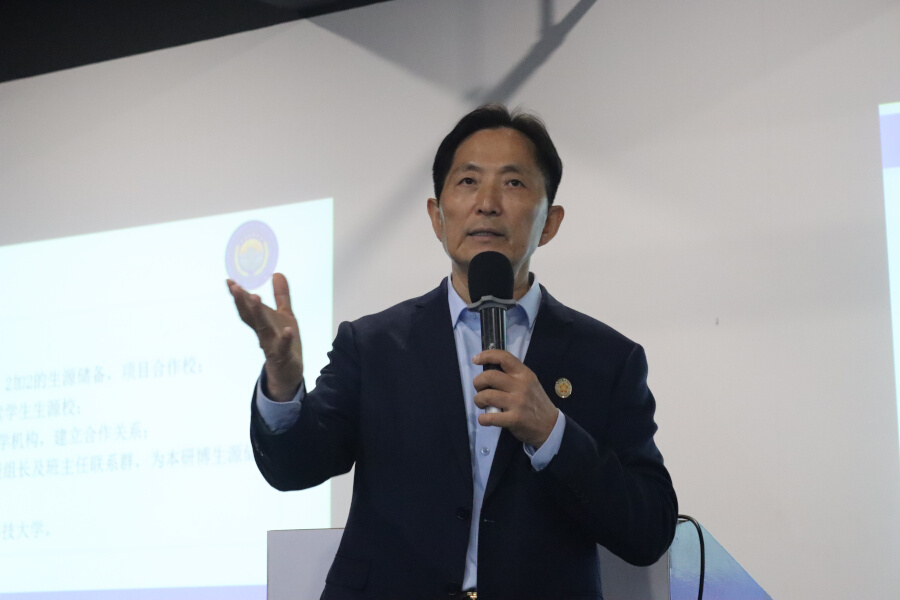
Kajang, July 15, 2025 – On the afternoon of July 15, 2025, Professor Chen Xiaoyun, Chairman of the Board of Kuala Lumpur University of Science and Technology and Chairman of Star Teenagers International Group, delivered a keynote address as part of the university’s expert lecture series. In his speech, he articulated the institution’s strategic positioning, talent cultivation vision, and global development mission. Emphasizing the core values of “Cooperation for All-Win Outcomes, Serving the Local Development, Integration of Industry & Education, and Pursuit of a Leading Place in ASEAN,” he affirmed that the university—newly elevated and rebranded following the acquisition of the former Infrastructure University Kuala Lumpur—is embarking on a renewed mission to serve international education and deepen the fusion between academia and industry.
Strategic Positioning: Building a “Golden Bridge” for Elite Talent Development
Professor Chen emphasized that the university will base its talent development system on the foundation of the “May Fourth Basic Charter,” embracing the spirit of democracy, science, responsibility, and integration to nurture well-rounded professionals with both domain expertise and a global mindset. Through a “four beams and eight pillars” top-level design framework, the university defines its mission to cultivate four categories of elite talent—education, science and technology, business, and political leadership. Central to this effort is the creation of a “Golden Bridge,” a transformative educational platform that connects knowledge and practice, linking the university with broader society. This initiative harnesses digitalization, intelligent systems, and integrated industry-academic collaboration to enhance teaching quality and expand the university’s societal impact.

To realize this vision, students will undergo a structured, multi-tiered experiential program: a six-month on-campus assistantship to deepen understanding of university operations, five discipline-related volunteer engagements to foster social responsibility, a one-year executive internship to build real-world industry experience, and a six-month placement with an international organization to develop global competence.
Capability Foundation: Forging Core Competitiveness in the Digital Era
The university is committed to nurturing students into “digital ecosystem architects,” equipping them with AI proficiency, digital literacy, technological ethics, and adaptive resilience. Its curriculum blends classical wisdom with cutting-edge technologies, empowering students to apply innovation practically while embodying the Star Teenagers’ cultural philosophy of perseverance, unity of knowledge and action, collaborative sharing, and inward cultivation with outward leadership.
Professional training focuses on three key pillars. First is the ability to apply and innovate with new technologies—integrating creative thinking within a rigorous engineering mindset. Second is the development of the “Five Gold” elements: gold-standard academic programs, courses, faculty, facilities, and instructional materials. Third is the capability to translate research into practical impact, driving solutions that serve real-world needs in urban development, energy optimization, and beyond.
A Shared Development Community: Driving Globalization and Industry-Education Integration
Professor Chen outlined the concept of a “career development community” as a core institutional strategy. On the industry-education front, the university is advancing integration by collaborating with leading enterprises such as NIO, iFLYTEK, and Huawei to establish seven specialized industry schools in fields including new energy vehicles and artificial intelligence. These initiatives will support the deep integration of scientific research and academic training.
In the realm of global engagement, the university aims to leverage its role within the “China–ASEAN Industry-Education Integration Community” to serve as an educational bridge between China and countries involved in the Belt and Road Initiative and the broader Global South. Through mechanisms such as the China–ASEAN Ministerial Forum and international collaborative research projects, the university will cultivate cross-cultural competence among faculty and students.
To further foster innovation and entrepreneurship, the university will establish incubation hubs and implement supportive policy frameworks that encourage the commercialization of scientific achievements by both faculty and students—injecting new momentum into regional economic growth.

Future Mission: Empowering Students, Illuminating Society
Expressing his hopes for the student body, Professor Chen encouraged students to “navigate with excellence and sail with ambition, while preserving the pure heart of a Star Teenager.” He stressed that the true brilliance of science and technology lies in its ability to touch the lives of ordinary people, urging students to contribute their wisdom to solving humanity’s shared challenges. Upholding the belief that “to nurture one student is to bless one family and serve one society,” the university will continue promoting its “One-Two-Three-Four-Five” internationalization initiative. By connecting with global institutions, high schools, and academic networks, the university will send more than 50 international students abroad each year, further expanding its global reach. The long-term objective is to build Kuala Lumpur University of Science and Technology into a “new dual-high and double first-class” international institution.
“Breaking the cocoon and awakening to the future with wisdom.” Kuala Lumpur University of Science and Technology will remain steadfast in its mission of integrity and innovation, advancing the Star Teenagers’ spirit—“united like a blaze, dispersed like stars across the sky”—as it sets a new benchmark for China–Malaysia education cooperation and regional development.

